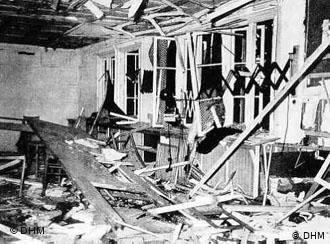 Incredibly, his briefcase was not searched, although on entering the inner Security Zone I, all personnel except Adolf Hitler’s inner circle were thoroughly searched, as a precaution against assassination attempts.
Incredibly, his briefcase was not searched, although on entering the inner Security Zone I, all personnel except Adolf Hitler’s inner circle were thoroughly searched, as a precaution against assassination attempts.
In order to avoid it von Stauffenberg arranged so that he entered the Zone I with Field Marshal Wilhelm Keitel reckoning that an officer in Keitel’s company would not be searched.
IMHO, he was wrong – the fact that his briefcase was not searched had nothing to do with him being a part of Keitel’s entourage. Security procedures do not work that way – to be allowed inside a secure area without being searched, one had to be on a special list.
Von Stauffenberg was on that list, ostensibly because his wounds (he lost an eye, his right hand, and two fingers on his left hand) qualified him as someone who posed no security threat.
The reality was quite different, though – Himmler wanted Stauffenberg to kill Hitler and ordered him to be put on the “VIP List” to make sure he does the job. For the same reason – contrary to standard security procedures instituted after the Elser bombings – Hitler’s security detail (acting on orders from their boss – Heinrich Himmler) allowed the “Cointreau bottles” on board the Führer’s plane.
At around 12:30 pm – right before the meeting was to start, von Stauffenberg made an excuse to use a washroom in Wilhelm Keitel’s office where he used pliers to crush the end of a pencil detonator inserted into a 1 kg block of British plastic explosives (Abwehr failed to develop anything even remotely as efficient) prepared by Wessel von Freytag-Loringhoven.
The detonator consisted of a thin copper tube containing cupric chloride that in that weather conditions (extreme heat) would take about ten minutes to silently eat through wire holding back the firing pin from the percussion cap.
According to most historians, the process of arming the bomb was slow due to the abovementioned Colonel’s war wounds. Interrupted by a guard knocking on the door advising him that the meeting was about to begin, von Stauffenberg was not able to prime the second bomb, which he gave to his aide-de-camp, Werner von Haeften.
This story is a bunch of BS (pardon my French). It is impossible to perfectly synchronize even modern electronic detonators, let alone the chemical ones in 1944. Hence, priming the second bomb made no sense at all – and was not even needed as the detonation process would make sure that both bombs go off at exactly the same time (for all practical, purposes).
In reality, von Stauffenberg’s moral and religious convictions got the best of him. He wanted to kill only Hitler – and minimize the “collateral damage” (ideally making sure that no one else dies or even suffers serious injuries). So the Colonel – despite instructions by explosive experts – used only one block of plastics instead of two. This decision saved Hitler’s life – and doomed the conspirators to almost instant failure and a certain death.
Stauffenberg placed the single primed bomb inside his briefcase and, with the unwitting assistance of Major Ernst John von Freyend (at the time adjutant to Field Marshal Wilhelm Keitel), who volunteered to carry his briefcase, entered the conference room where Adolf Hitler and 20 senior Wehrmacht officers have already commenced the meeting.
He positioned the briefcase under the table right next to Hitler, guaranteeing that even the one-block blast would sent the Führer straight to Valhalla (or other appropriate place in the afterworld). After a few minutes, Stauffenberg received a planned telephone call and left the room being quite sure that this time Adolf Hitler will die.
However, the Providence interfered again – big time. Colonel Heinz Brandt (at the time an aide to General Adolf Heusinger, then the interim Chief of then General Staff), trying to get a better view of the map, moved the briefcase to the other side of the stout block leg, away from Hitler. The blast thus blew away from Hitler, and ironically toward Brandt, who died from it the next day.
Another (not exactly unexpected) development that saved Hitler’s life was the change of venue for a meeting. Due to the murderous July heat, the conference was moved from the bunker to the summer bungalow thus making most of the shock wave go outside, instead of staying inside.
Hence, even a 2kg block of explosives would not have necessarily killed Hitler (although he might have been seriously injured), let alone half that much.
At 12:42, exactly ten minutes after being armed, the bomb detonated, demolishing the conference room and killing a stenographer on the spot. More than 20 people were injured with three officers later dying from their wounds.
The Führer survived, as did everyone else who was shielded from the blast by the conference table leg. His trousers were singed and tattered (see photograph below) and he suffered from a perforated eardrum, as did most of the other 24 people in the room.
Hence the result of von Stauffenberg’s assassination attempt was by and large the same as the one by Georg Elser five years earlier – several innocent people dead, many more innocents injured (some seriously) with no serious or even lasting harm suffered by his intended target.
Stauffenberg, upon witnessing the explosion and smoke, erroneously assumed that this time Hitler the assassination attempt was (finally) successful and Adolf Hitler has finally left our world and was on his Walhalla (or wherever).
He climbed into a staff car with his aide Werner von Haeften and managed to bluff his way past three checkpoints to exit the Wolfsschanze complex. Well, maybe bluff had little to do with it as Himmler, not completely sure that Stauffenberg will (finally) detonate the bomb on that date, made sure he could safely get out and away.
Werner von Haeften then tossed the second unprimed bomb into the forest (an incredibly stupid thing to do as only a complete moron would leave such evidence behind) as they made a dash for Rastenburg airfield, reaching it before it could be realized that Stauffenberg could be responsible for the explosion.
By 1pm he was airborne in a Heinkel He 111 (transport version of the venerable Luftwaffe bomber) arranged by Eduard Wagner – Quartermaster-General of the German Army.
By the time he reached Berlin at approximately 4pm, the whole plot was in a complete mess. FUBAR would have been a pretty mild way to describe it (actually, the whole situation).
The key individual responsible for this confusion was the second most important plotter in Wolf’s Lair General der Nachrichtentruppe (Communications Troops) Fritz Erich Fellgiebel who promised what he could not deliver.
He was in charge of all Wehrmacht-run communication channels between Wolfsschanze and the outside world. Hence he could (and did) severe all these channels immediately after Stauffenberg’s bomb went off.
Unfortunately, he did it before confirming that Hitler was dead (or was alive); as the result, the conspirators in the Reserve Army HQ had no clue about what actually happened to Hitler for almost three hours (!). Absolutely critical hours.
That was bad enough for the plotters, unfortunately, there was something else that made the situation much worse. Himmler’s SS (more specifically, the units responsible for Hitler’s personal security and the security of Wolf’s Lair) had their own communication channels that Fellgiebel had no control over.
Consequently, Himmler, Goebbels and other Nazi leaders knew that Hitler was alive even before the plotters did. When it became clear that the attempt had failed and that the proverbial cat was out of the proverbial bag, Fellgiebel had no other choice but to override the communications black-out he had set up and to inform his co-conspirators that the attempt on Hitler’s life failed. Again.
The situation got even more confusing when von Stauffenberg phoned from the airport to tell Olbricht et al. that Hitler was in fact dead.
The Bendlerblock plotters did not know whom to believe but now there was no turning back regardless of who was telling the truth. After wasting three crucial hours waiting for the information from Wolf’s Lair (which made no sense as after the bomb went Operation Valkyrie had to be launched regardless of whether Hitler was alive or not), Olbricht issued the initiation orders pretending that the order was given by the only individual in the Reserve Army who had the right to do so – its commander Generaloberst Friedrich Fromm.
However, the letter was way too cautious to take his deputy at his word without some kind of independent confirmation. So he called Field Marshal Wilhelm Keitel at the Wolf’s Lair and was assured that Hitler was alive. Keitel demanded to know Stauffenberg’s whereabouts (by that time it was already established that the latter was the only one who could have planted the bomb).
At 16:40 Stauffenberg and Haeften arrived at the Bendlerblock. Fromm, promptly changed sides (the only decision that made sense under the circumstances) and attempted to have Stauffenberg arrested.
Olbricht and Stauffenberg restrained him at gunpoint and Olbricht then appointed General Erich Hoepner (at the time already retired from the Army) to take over his duties.
By this time Himmler (no surprise here) had taken charge of the situation and had issued orders countermanding Olbricht’s initiation of Operation Valkyrie. In many places the coup was going ahead, led by the plotters who believed that Hitler was dead.
City Commandant, and conspirator, General Paul von Hase ordered the Wachbataillon Großdeutschland – part of the Berlin Defense Force, under the command of Major Otto-Ernst Remer, to secure the Wilhelmstraße (the government district of Berlin) and arrest Propaganda Minister Joseph Goebbels.
Major Remer was a very brave individual – and an outstanding leader. His Knight’s Cross of the Iron Cross with Oak Leaves proved both points beyond the reasonable doubt. However, he was also a natural-born politician (after the war he made a rather successful foray into far-right politics in Germany).
And thus had an excellent nose for trouble. He was later quoted as saying: “I know there’s a coup going on. What I do not know is which side are we on”. To clarify things, he (wisely) decided to listen to the other side as well before issuing any orders of his own.
So he called Joseph Goebbels – the Gauleiter (Nazi Party leader) of Berlin and asked for his comments. Goebbels invited Remer to visit him in his office and in the meantime arranged for a phone call to Wolf’s Lair to speak with Hitler himself.
The Führer (always a politician) immediately promoted Remer two ranks to Oberst (the actual order was issued on the same night) and ordering him to crush the plot in Berlin with the troops under his command. Which confirmed Remer’s suspicion that he had been taking orders from the mutineers,
He returned with his troops to the Berlin Military Headquarters at Bendlerblock, and arrested the plotters, including Stauffenberg. General Friedrich Fromm, anxious to protect his butt (ultimately unsuccessfully) had the plotters immediately summarily executed by firing squad, despite Remer protests that he had been told to keep the plotters alive pending further orders from Hitler, who was at that time already returning to Berlin.
Others would have been executed as well, but at 00:30 SS personnel led by no other than Otto Skorzeny arrived and further executions were forbidden. Over the following weeks, Himmler’s Gestapo, driven by a furious Hitler, rounded up nearly everyone who had the remotest connection with the plot.
The discovery of letters and diaries in the homes and offices of those arrested (keeping these was a really dumb idea) revealed the plots of 1938, 1939, and 1943, and this led to further rounds of arrests, including that of Franz Halder, who finished the war in a concentration camp.
Under the new Sippenhaft (“blood guilt”) laws (modeled after Stalin’s practice in such cases), many relatives of the principal plotters were also arrested in the immediate aftermath of the failed plot and sent to concentration camps.
Not all of about 5,000 executed (and even of about 7,000 arrested) were connected to the plot – the Gestapo used the occasion to do away with suspected and even potential members of the Resistance.
Hitler took his survival to be a “divine moment in history” (no surprise here), and commissioned a special decoration to be made for each person wounded or killed in the blast. The result was the Wound Badge of 20 July 1944.
As a result of the failed coup, every member of the Wehrmacht was required to re-swear his loyalty oath, by name, to Hitler and, on 24 July 1944, the military salute was replaced throughout the armed forces with the Hitler Salute in which the arm was outstretched and the salutation Heil Hitler was given.
Major General Henning von Tresckow (who did not participate in the plot but was a major inspiration behind it) right before committing suicide the day after the failure of the plot said:
The whole world will vilify us now, but I am still totally convinced that we did the right thing. Hitler is the archenemy not only of Germany but of the world. When, in few hours’ time, I go before God to account for what I have done and left undone, I know I will be able to justify what I did in the struggle against Hitler. None of us can bewail his own death; those who consented to join our circle put on the robe of Nessus [poisoned shirt that killed Hercules]. A human being’s moral integrity begins when he is prepared to sacrifice his life for his convictions
I beg to disagree. IMHO, July 20th plot was a colossal waste of life with exactly zero chances of success. In one of the next sections I will prove beyond the reasonable doubt that even if the assassination attempt had succeeded, it would have resulted only in Himmler becoming the de-facto Führer of Germany.
Which could have changed the situation for the worse (possibly much worse) – not for the better. IMHO, the right thing to do for the conspirators was either to somehow get to the Western front and find the way to surrender to the advancing Western Allies.
Or passionately and efficiently fight on the Eastern front to save the Christian civilization from being conquered and destroyed by the Bolshevik hordes (something that Wehrmacht and Waffen-SS had been doing for three years by that time).
July 20th conspirators were genuine patriots and heroes, no doubt about that. Unfortunately, they were ignorant of the most basic facts about the Nazi Germany and the Allies, naïve and thus hopelessly incompetent. So it is no surprise at all that they failed – and failed miserably.
The individual who made a 100% correct prediction of the results of the plot was Helmuth James von Moltke, the great-grandnephew of Moltke the Elder, hero of the Franco-Prussian War (subsequently arrested and executed by the Nazis for activities unrelated to July 20th plot).
When asked about his opinion on assassinating Hitler, he replied that he was against it. And added: “we are all amateurs and would only bungle it” (i.e. an assassination attempt). And that’s exactly what happened.
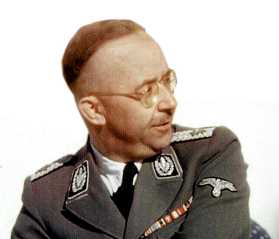 As I have already mentioned, SS-Reichsfuhrer had at least one personal agent inside the coup – one Hans Bernd Gisevius. Consequently, he knew everything he needed to know about the Oster/Halder conspiracy in 1938… and in 1941 (we are in the realm of alternate history here).
As I have already mentioned, SS-Reichsfuhrer had at least one personal agent inside the coup – one Hans Bernd Gisevius. Consequently, he knew everything he needed to know about the Oster/Halder conspiracy in 1938… and in 1941 (we are in the realm of alternate history here).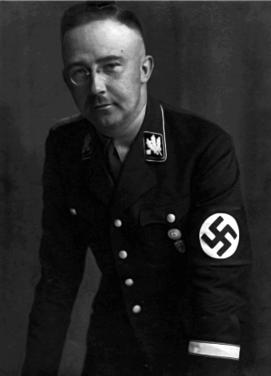 The situation in 1943 was even better. Much better. His control over the security services was consolidate into RSHA – Reich’s Main Security Office; his control over the economy was expanded and tightened (not least due to his total control over the supply of slave labor), more government officials were SS officers, SS-VT was now full-fledged, well-equipped and battle-hardened Waffen-SS, etc., etc.
The situation in 1943 was even better. Much better. His control over the security services was consolidate into RSHA – Reich’s Main Security Office; his control over the economy was expanded and tightened (not least due to his total control over the supply of slave labor), more government officials were SS officers, SS-VT was now full-fledged, well-equipped and battle-hardened Waffen-SS, etc., etc.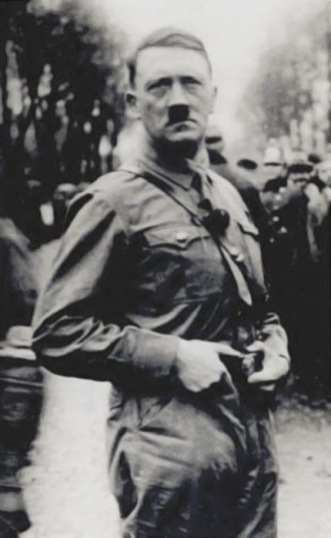 According to “mainstream history” (i.e., anti-Nazi propaganda), all those who plotted the assassination of Hitler were heroes (this one is true), genuine patriots of Germany (debatable) who wanted to kill the Nazi dictator (true), bring down the Nazi regime (not necessarily) and restore democracy in Germany (never).
According to “mainstream history” (i.e., anti-Nazi propaganda), all those who plotted the assassination of Hitler were heroes (this one is true), genuine patriots of Germany (debatable) who wanted to kill the Nazi dictator (true), bring down the Nazi regime (not necessarily) and restore democracy in Germany (never). Incredibly, his briefcase was not searched, although on entering the inner Security Zone I, all personnel except Adolf Hitler’s inner circle were thoroughly searched, as a precaution against assassination attempts.
Incredibly, his briefcase was not searched, although on entering the inner Security Zone I, all personnel except Adolf Hitler’s inner circle were thoroughly searched, as a precaution against assassination attempts.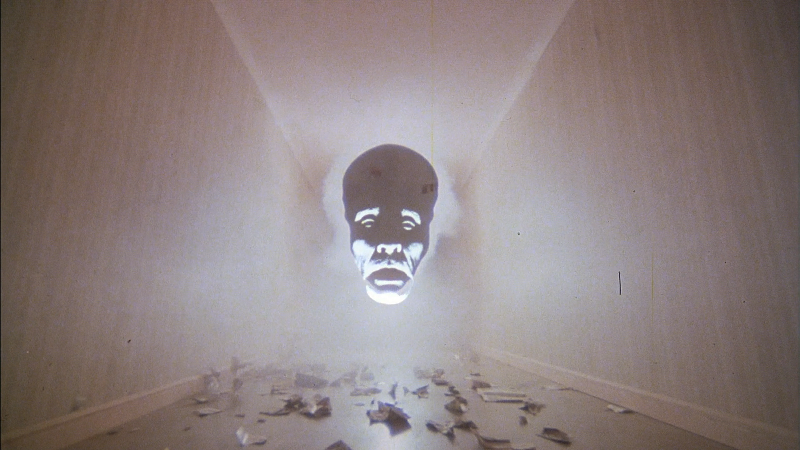
 On one crucial issue, I completely agree with mainstream historians: all July 20th plotters were genuine heroes and patriots of Germany. They risked their lives to achieve highly noble objectives (and most gave their lives).
On one crucial issue, I completely agree with mainstream historians: all July 20th plotters were genuine heroes and patriots of Germany. They risked their lives to achieve highly noble objectives (and most gave their lives).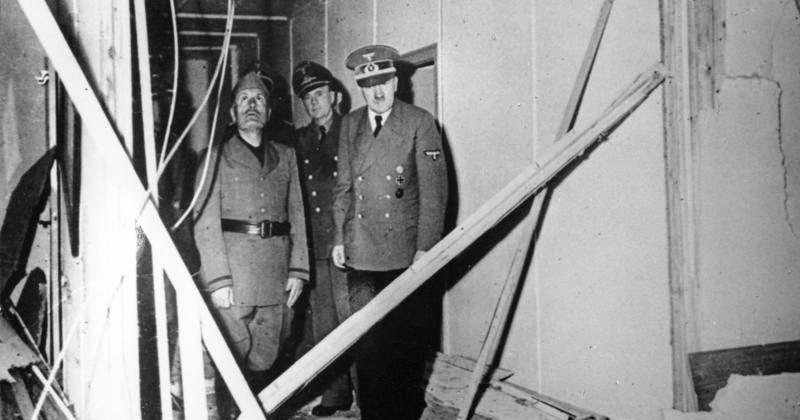
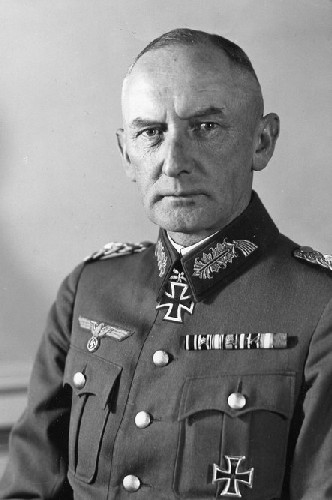 The overall assassination plan was developed (no surprise here) by ardent anti-Nazi (and probably the most radical member of the military Resistance) Hans Oster. As he was busy with the overall planning of the coup, he left the operational details to two his associates, Friedrich Wilhelm Heinz and Franz Maria Liedig.
The overall assassination plan was developed (no surprise here) by ardent anti-Nazi (and probably the most radical member of the military Resistance) Hans Oster. As he was busy with the overall planning of the coup, he left the operational details to two his associates, Friedrich Wilhelm Heinz and Franz Maria Liedig.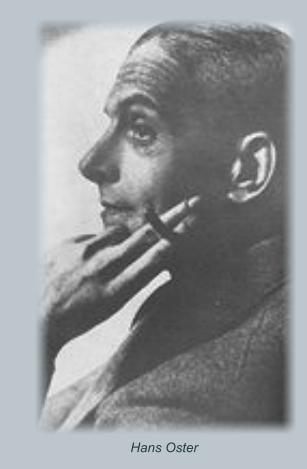 All conspiracies except two were pretty much limited to murdering (let’s be frank) Adolf Hitler. Even the Wehrmacht generals in 1943 who developed and (almost) executed assassination attempts on Hitler’s life, had a rather vague idea of what to do after Der Führer is gone.
All conspiracies except two were pretty much limited to murdering (let’s be frank) Adolf Hitler. Even the Wehrmacht generals in 1943 who developed and (almost) executed assassination attempts on Hitler’s life, had a rather vague idea of what to do after Der Führer is gone.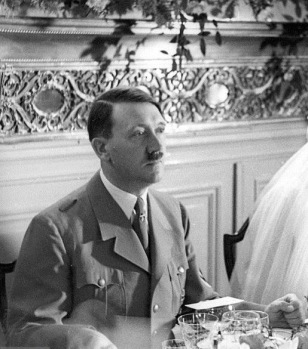 Undeterred by this mystical failure, von Tresckow made another attempt on Hitler’s life – just one week later. Again, not in person – this time his agent (tool, actually) was one Generalmajor Rudolf Christoph Freiherr von Gersdorff – intelligence liaison with the Abwehr (hotbed of anti-Nazi resistance).
Undeterred by this mystical failure, von Tresckow made another attempt on Hitler’s life – just one week later. Again, not in person – this time his agent (tool, actually) was one Generalmajor Rudolf Christoph Freiherr von Gersdorff – intelligence liaison with the Abwehr (hotbed of anti-Nazi resistance).